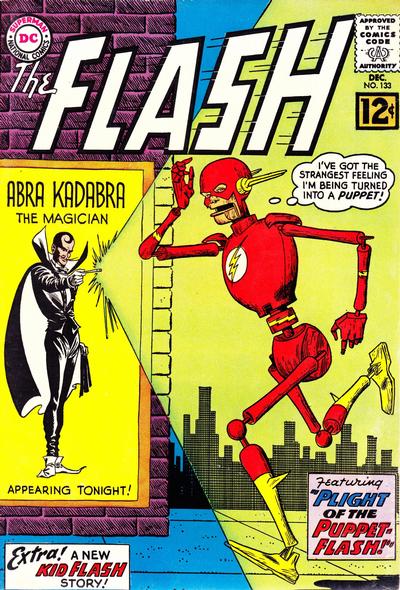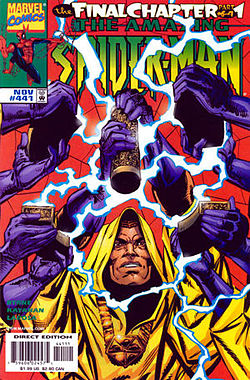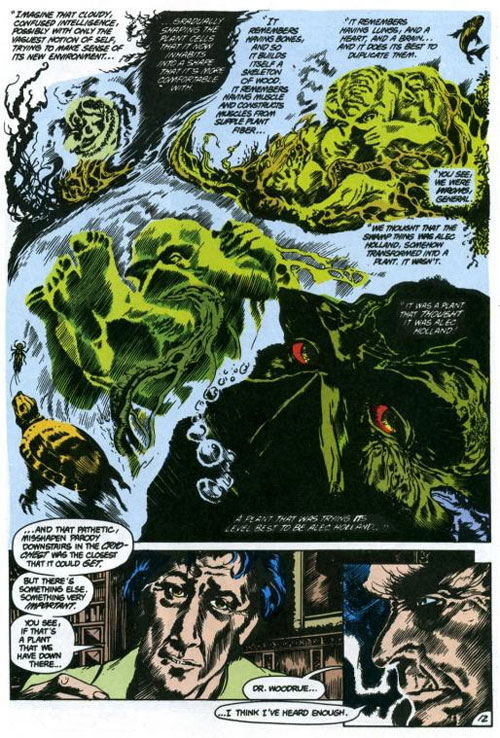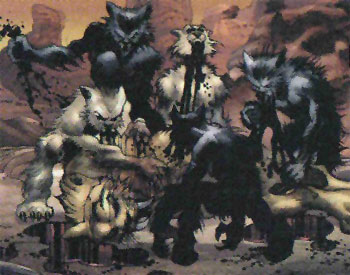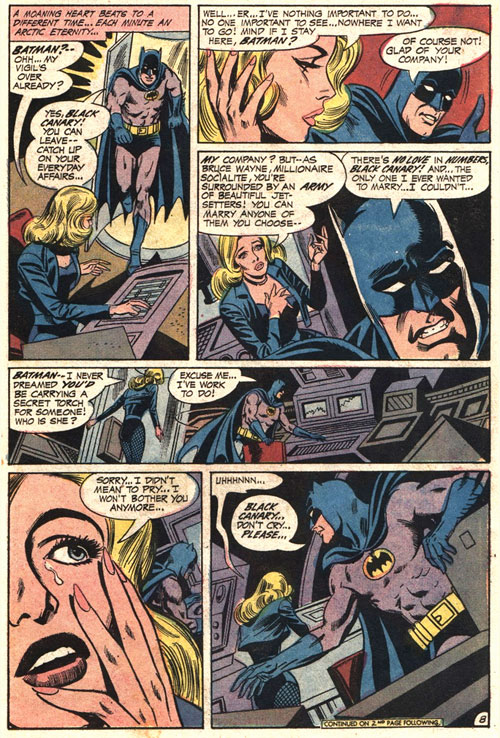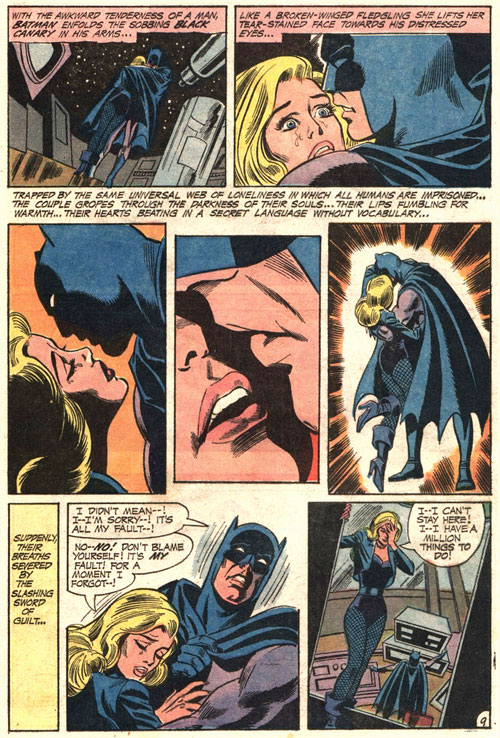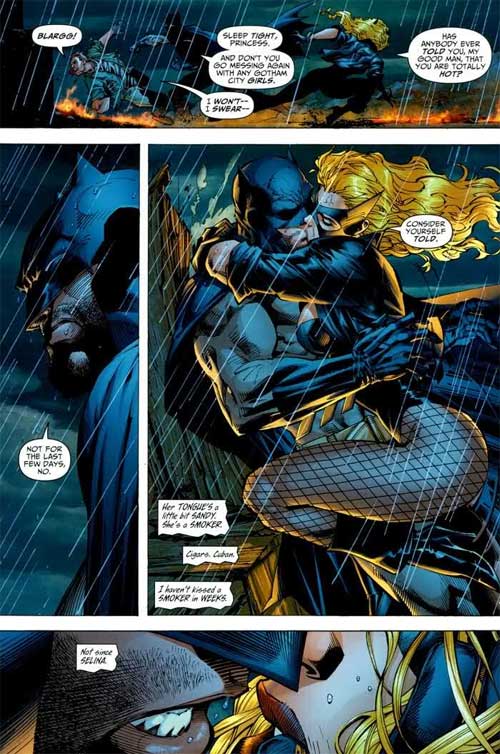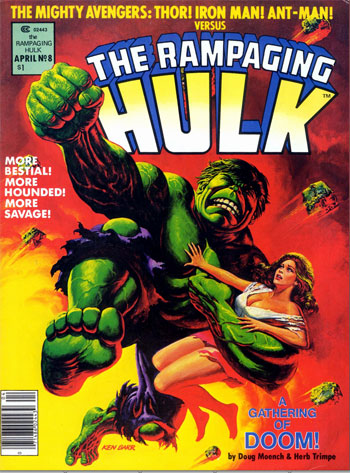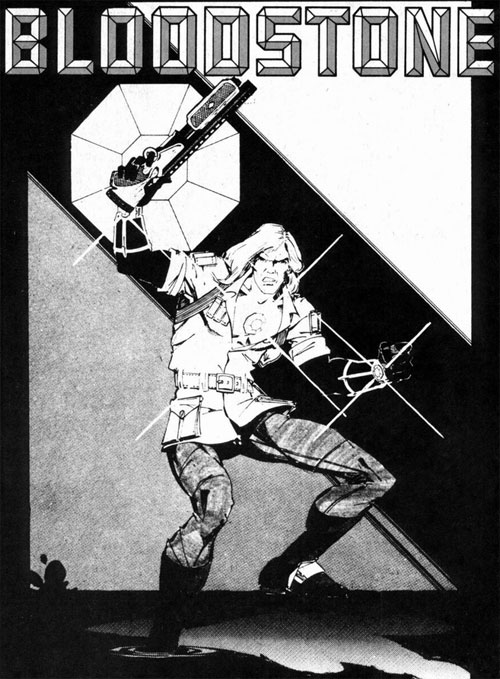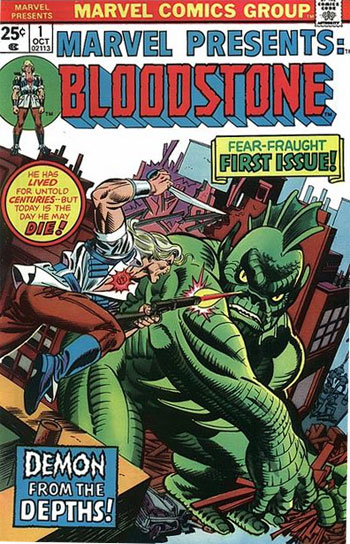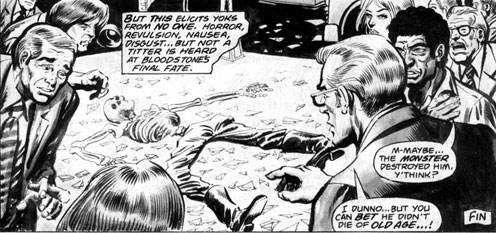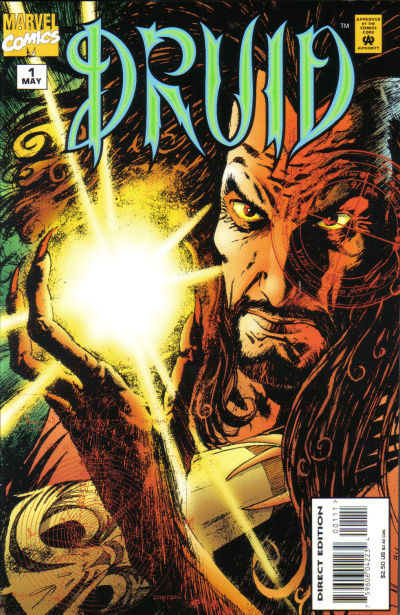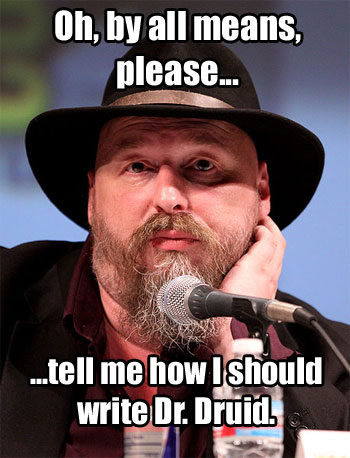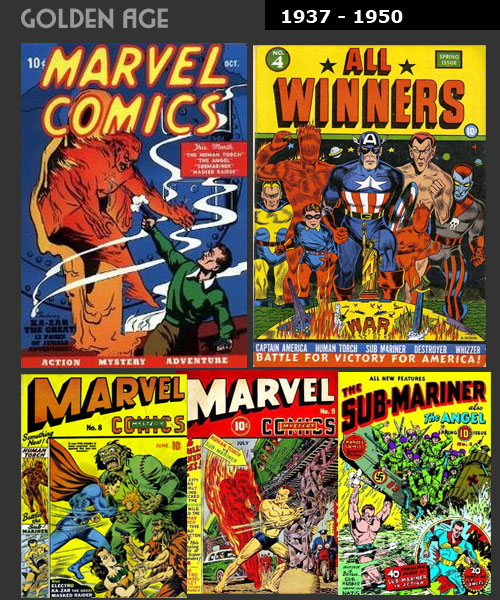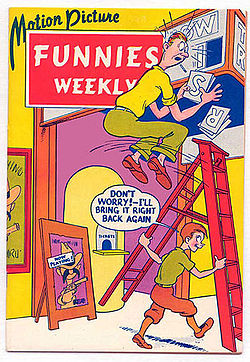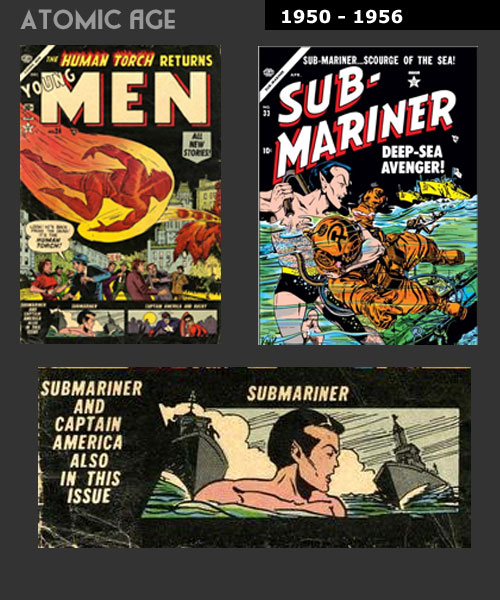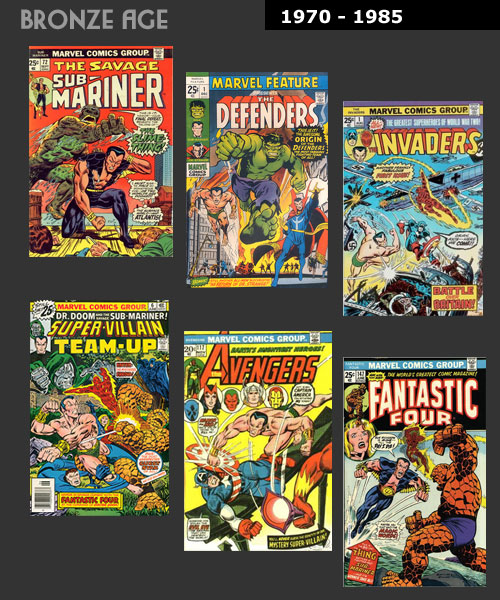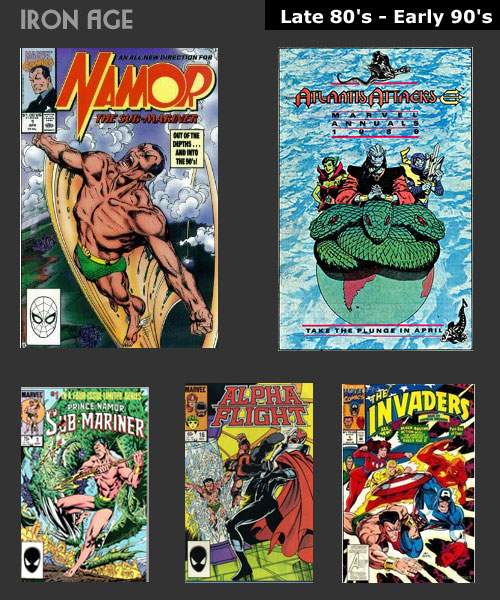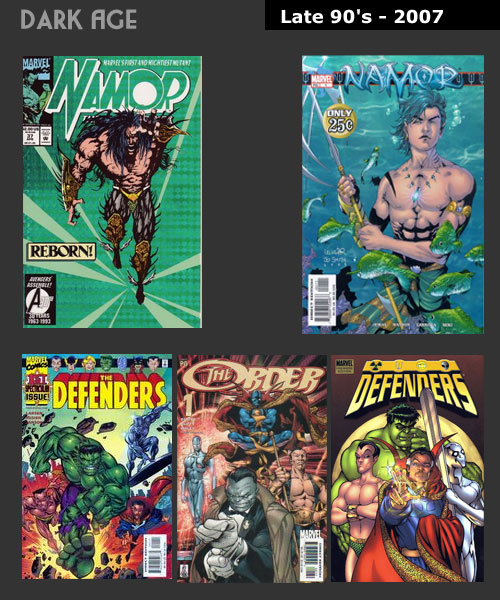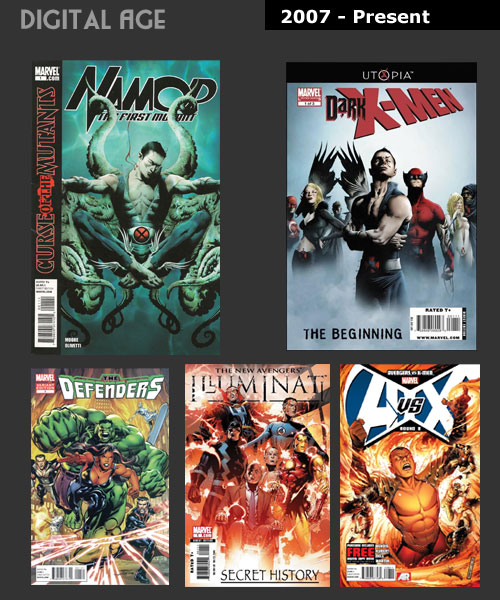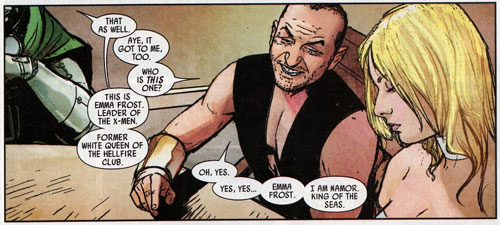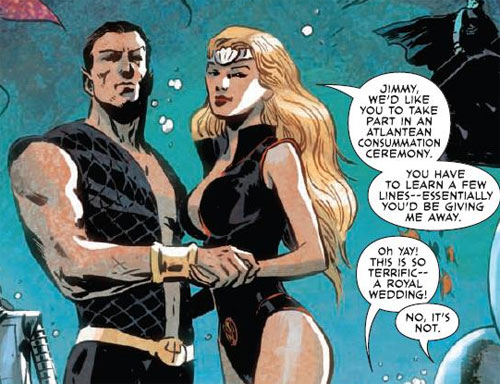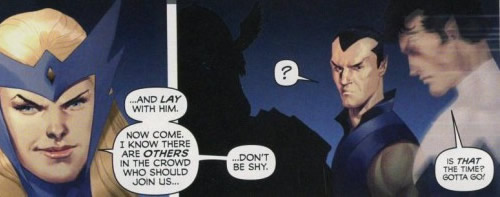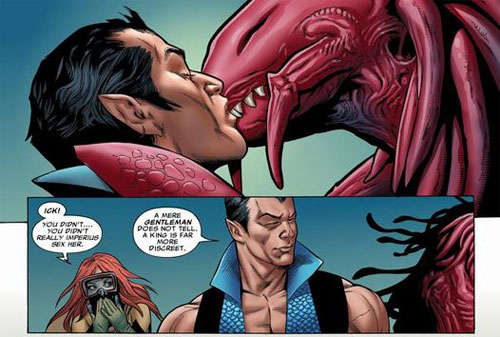"Omactivate!"

That one word sums up perfectly the OMAC series that was released with the new 52. If you find it cool, you will love the OMAC comic. If you find this stupid, the NEW OMAC is definitely not for you.
Since it was cancelled after what, 8 issues?? My guess is that most people found this stupid.
And I assume that sales must have been pretty bad since all we got was the softcover TPB as opposed to the hardcovers that other series got.
Oh well.

Which is sad... because for me, the OMAC series was pretty much the only series out of the new 52 that I really enjoyed when the new 52 was brand new.
But not being a complete fool, I did not really expect a series that was made up of faux Kirby artwork ...and filled with Kirby concepts from the 70s to be a hit. Odds are that it was too dated or not edgy enough or some such crap.
But if you are one of the unfortunate souls who did enjoy the OMAC series, I would suggest that you get the Essential Hulk volumes that cover the era when Herb Trimpe was working on the series (Essential Hulk volume 4, 5, and 6 I believe.)

My favorite issue from that run HAS to be HUlk 204... which is sadly pretty much the end of the Herb Trimpe era of the Hulk.
So I guess that I HAVE to agree with those who called OMAC DC's attempt at creating themselves a blue Hulk.
But it was pure fun from page one to the end.
But what of the rest of the NEW 52??
Well, from what I can tell, it started with strong sales over all... but a few months later it was pretty much back to square one.
Series with characters like Batman that sold well BEFORE the NEW 52 still sold well, but for most new series... sales took a dive. So series like OMAC were cancelled. Heck at some point it seemed like all DC were doing was cancelling new comics that were not performing well. And from what I can tell, their second wave pretty much went by unnoticed. Other then the hype around stuff like a gay Green Lantern or some such thing, no one really cared about the second wave of the NEW 52. I guess people were too busy being excited about the new Before Watchmen comics to even notice that second wave.
I had pretty much given up on the NEW 52, but once in a while, I would give a NEW 52 series a try.
I tried the Demon Knights TPB.

Loved the artwork, but did not care one bit about the characters or what happens in the story. The NEW 52 formula seems to be to put as much gore... sex, and vertigo elements as possible. Demon Knights has plenty of blood and gore to satisfy the most bloodthirsty fan, but I was surprised that they did not have a scene with a splash page with Etrigan and Xanadu doing the wild thing. I guess they did refrain themselves from going there.
I guess they had a hard time establishing properly the setting and all the character for this series. So you never really care about the characters and don't give a rat's ass whenever they are facing some sort of peril. But being a foolish fool, I gave other series a try.
The next one I tried was the Batman.

I love Batman... despite the fact that there hasn't been a good Batman comic in more than 10 years. I think that last time I bought a regular Batman comic monthly was when I was buying the comic of the Bruce Timm animated version. But there seems to be a lot of praise around the Court of the Owl story... so I was curious and decided to try the TPB. Of course this being Batman... the TPB is a HC. But still I gave it a try, and I kind of liked it.

I remember really liking Greg Capulo's artwork on Spawn, but it was strange to see his work without Todd McFarlane inking it. Took me some time to get used to it. And I am always amazed at how Batman is often seen as a more realistic super-hero... but how we end up with holographic masks and computer contact lenses, since those do exist in reality, right??
The tech in this comic is so advanced that it shatters any hope of ever being able to call this comic realistic. I have the same problem with the latest Batman movies. They are labeled as being more realistic... but the tech in those movies is so advanced... it makes Star Trek look like the Stone Age (yes I am exaggerating).
But let's get back to the comic. Even ignoring the advance tech out of Total Recall, this tale is far from perfect. Right from the start... we can see some of the confusion around the NEW 52. It seemed obvious that the NEW 52 was some last minute thing. That very little thought or planning had been put into this NEW 52. And that they had some pretty piss poor communication or did a piss poor job at coordinating the whole thing.
The best example of that in Batman is how they took the time to establish that Tim Drake was a former Robin and how he was a member of the Teen Titans. Heck even in Teen Titans we saw a photo of Tim as Robin swinging on a rope next to Batman. But now it seems, DC are saying that "No... No Tim was never Robin".
Now that comes from either piss poor planning, or piss poor communication between the editors/creators. But despite the magic tech and the poor continuity... this has been a pretty enjoyable/intriguing tale. The Owl seemed like a cool villain... but it was quickly revealed as one of many... which was still pretty cool.
Although it was convenient how Batman knocked out the ONE tooth that was required in the scene to reveal... something hidden in the tooth (am trying not to spoil too much). He knocked out the ONE tooth with the evidence he needed. Not several teeth and one of them being the one he needed. He knocked out the ONE tooth required, and no more.

Sadly... the HC ends on a cliffhanger... but I was intrigued enough by the tale to try out the next HC TPB.
Next up was Action Comics.

People kept on raving how great this book was and how Morrison was a genius in his telling of the tale. So I said... "F it, let's try out this sucker."( And in HC no less.)
My dictionary must be outdated because... the word genius describes nothing that is in this comic. Heck I can't even call it a good comic. Nothing in this comic is established properly.
When the comic starts... you are left wondering, when is this comic supposed to be happening?? From the Superman jeans with them patches and the police cars at the beginning, you would think that this comic is set in the late 30s. Are they trying to set the NEW 52 Superman in the late 30s once again??
No.
From whatever info we could get online, this comic is supposed to be set 5 years in the past. But looking at Superman's jeans, I haven't seen jeans patched up like this since about 3 decades ago. The same with the police cars. But at some point we see a blackberry to remind us that this comic is supposed to be set in modern times.
Although turning the Superman comics into a period piece could have been a good idea. But that is not what they did. I could go on all day about that comic... but I will try to keep it short.
When you see new characters like the Legion of Super-Heroes, or the Anti-Superman, or the K-men, or the guy with the moustache at the end (no idea who he is)... the comics makes no effort to try and introduce them. The writer counts on the reader already knowing who those guys are.

The writing in this comic is so amateurish... it stands on a level all of its own. If there was some Olympics of amateur writing... this would win the gold, the silver and the bronze all at once. Damn that was not a good comic. And as far as being a retelling/update to the Superman origin, it was freaking pointless.
What pisses me off the most is that we had Superman Secret Origin like what? 6 months before the reboot? It was a nice retelling of the Superman Origin that should have been the definitive Origin for at least the next 10 years. But noooooo. DC had to have their reboot. Damn!
Next was Justice League Hardcover

I already mentioned what I thought about the early Justice League issues, but I tried the HC hoping that it would change my opinion once I would have read the whole story. It did not change my opinion.
Damn how that was a bad origin.
The characters act like immature children... which is to make them "cool" I guess. As I feared the comic is pretty much done like a paint by numbers painting. And I would complain that Darkseid has the worst redesign in recorded history, but sadly that title goes to Cyborg. As much as I usually like Jim Lee's artwork, damn he is a piss poor designer. He has to be the worst designer in the multiverse. And now that we know how Superman got his Kryptonian costume, the question stands.
Why does Batman have the same costume?? Is he wearing a Kryptonian battle armor? Did they retconn Batman as being Kryptonian?
I know that the reason is that both costumes were designed by Lee. The same with all them matching collars. But damn how that is poor design and planning. What is most disappointing is that this comic should have been good. Geoff Johns is a good writer and he usually has good ideas... and Jim Lee is a good comic artist in general. But the pairing of those two titans of the comic industry gave us something that is not worth reading.
Very disappointing.
And last... the last NEW 52 comic I have tried, Aquaman, also in HC.

And this comics settles the issue... Aquaman is nothing more then the guy who talks to fish. And the more they try to convince us that he is more than that, the more they convince us that that is all that he is. Sorry if you are an Aquaman fan. At least the art is gorgeous... but the story is pointless.
And it uses the NEW 52 formula with some horror/vertigo injected in the comic, some blood and some guts. All that is missing is some sex, which I am surprised they did not put in this comic. Is it because Aquaman is married to Mera and once you are married, you no longer have sex? ;)
But seriously that was a boring comic with some great artwork, so not a total loss.
So what of the NEW 52 after a year has gone by? Some good stuff that was cancelled. Some intriguing stuff, but a lot of piss poor stuff that was not worth it. All in all, the NEW 52 was the perfect jumping off point for me.
I guess that if I want my DC super-heroes fix, I will need to keep on watching the Young Justice cartoon, or keep playing DC Universe Online.
We shall see.
Until next time.

